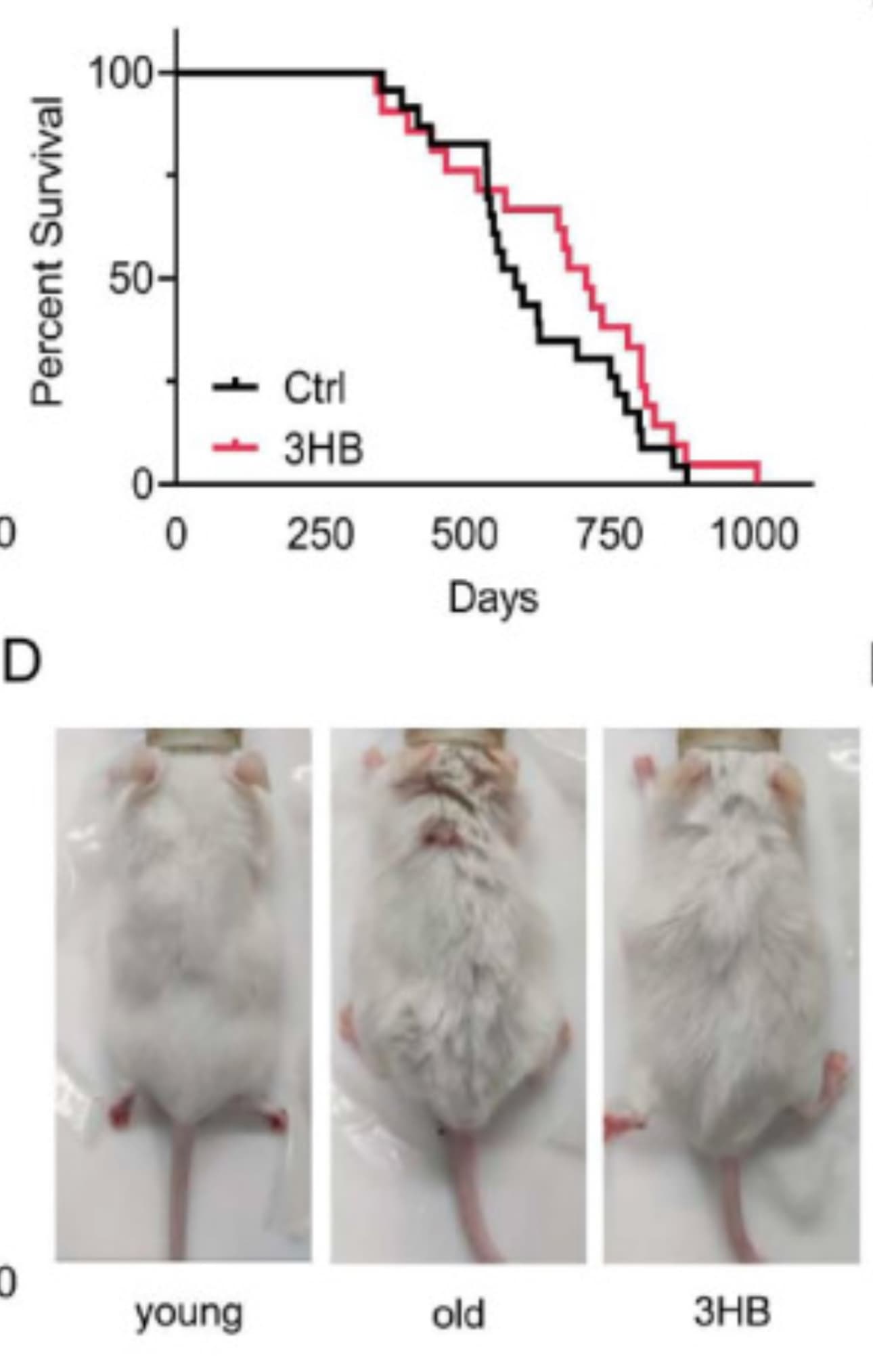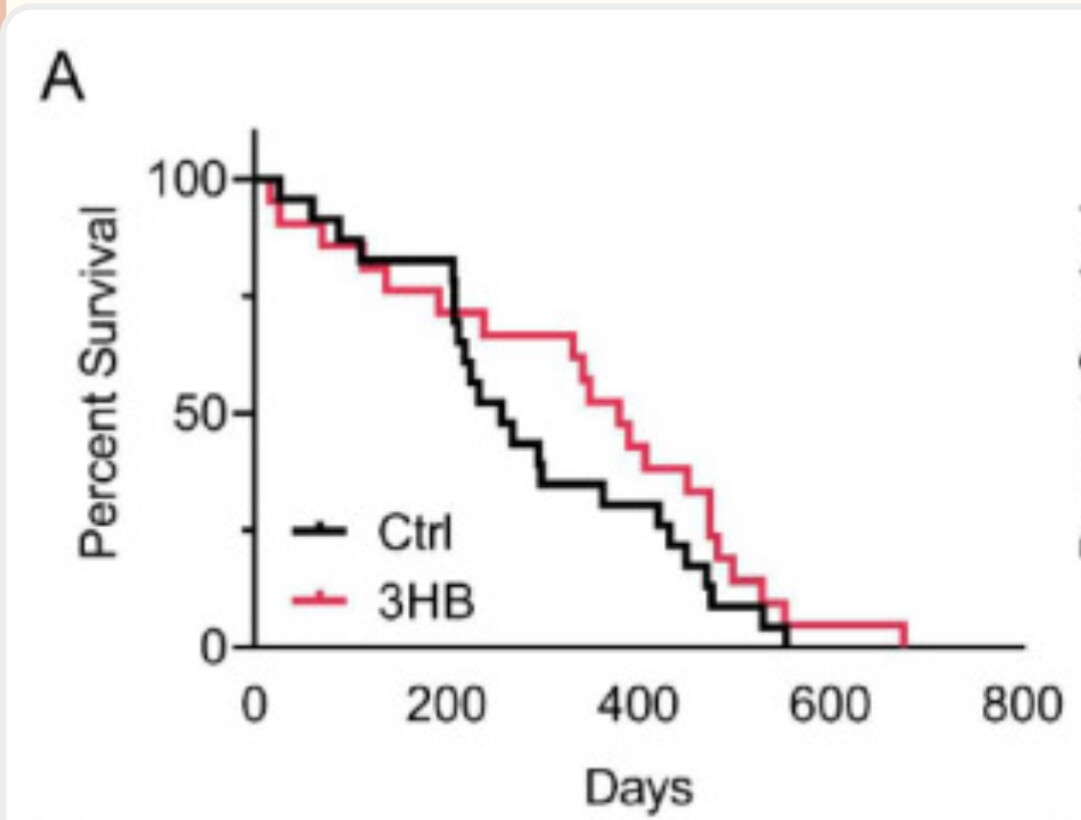Unveiling the Anti-Aging Potential of 3HB: Lifespan Extension and Cellular Senescence Delay
Yongpan An et al. Nutrients. 2025.
Abstract
Background/objective: Aging is a significant risk factor for chronic diseases and disability, yet effective anti-aging interventions remain elusive. We explored the potential of 3-hydroxybutyrate (3HB), an endogenous metabolite with established safety, to modulate longevity in mice.
Methods: In this study, we employed 2BS and WI-38 cell models, a yeast model, and naturally aging mouse models to investigate the effects of 3HB on aging in various systems. Additionally, we utilized RNA sequencing and metabolomics technologies to explore the potential mechanisms underlying the action of 3HB.
Results: Our findings demonstrate that 3HB supplementation effectively delays cellular senescence, extending yeast lifespan by 51.3% and the median lifespan of naturally senescent mice by 21.0%. Notably, 3HB prolonged healthy lifespan in mice while mitigating age-related tissue morphology changes and organ senescence. Mechanistically, we identified that 3HB’s anti-aging properties are mediated through its ability to delay cellular senescence and metabolic reprogramming, while promoting the production of beneficial metabolites like trigoneline and isoguvacine.
Conclusions: These findings highlight the promising therapeutic potential of 3HB as an anti-aging intervention and provide novel insights into its underlying mechanisms. [PMID: 40431385]
From the full text:
“The results show that 3HB can delay cellular senescence and extend yeast lifespan, and it also increases the median lifespan of mice by 21.0%, while alleviating age-related tissue and organ decline. Mechanistically, we found that the anti-aging properties of 3HB are mediated by its ability to delay cellular senescence and reprogram metabolism, while also promoting the production of beneficial metabolites such as trigonelline and isoguvacine.”
“While promising anti-aging candidates, like senolytics and mTOR inhibitors, exist, concerns regarding safety and clinical translation due to side effects remain [27,28,29]. Endogenous metabolites, like 3HB, offer a safer alternative due to their natural presence in the body. In this study, we found that 3HB intervention extended the median lifespan of mice by 21% (123 days) and the mean lifespan by 8.4% (52 days) throughout their entire life cycle (as shown in Figure 2A). We then compared 3HB with other known compounds that delay aging. Our findings revealed that metformin can extend the mean lifespan of mice by 4.15% from the start of the intervention [6]; NMN/NR can extend the mean lifespan of mice by 30.2% from the start of the intervention, and the mean lifespan throughout the entire life cycle can be extended by 4.7% [4]; rapamycin can extend the mean lifespan throughout the entire life cycle by 7% to 16% [10,11]; dasatinib + quercetin can extend the mean lifespan of mice by 36% from the start of the intervention [3]. From these studies, we can see that the anti-aging effects of 3HB are comparable to or even more outstanding than those of these well-known anti-aging compounds.”
Notes: Treatment was started at 11 months. They used an outbred strain of mice, ICR. And they were male mice. Female mice were not tested. A published lifespan study with 300 mice found the median lifespan was around 16 months; approximately 490 days. The first graph above shows the effect on total lifespan. The graph below shows the survival curve for 11 months forward, giving a better indication of the interventional effect.

